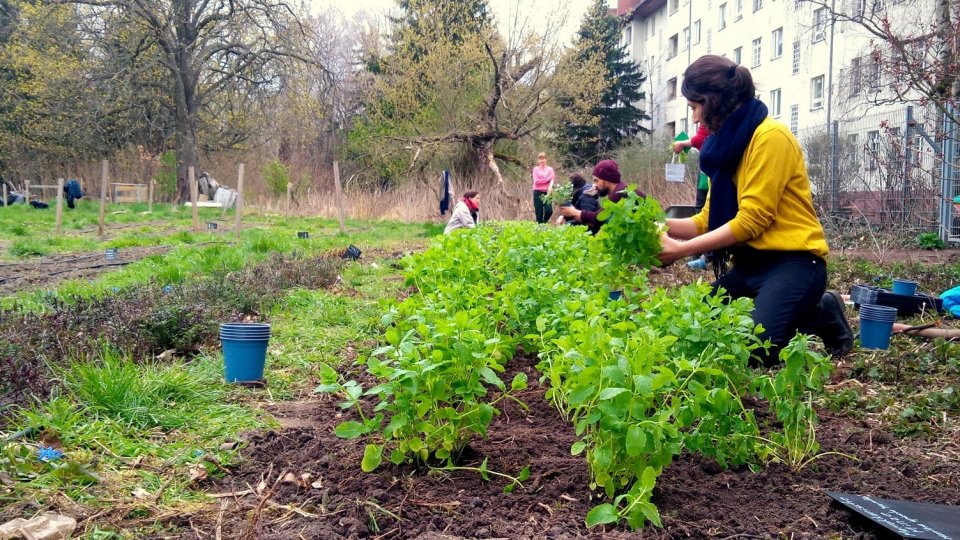
The Living Lab in Neukölln is located in and around the New St. Jacobi Cemetery. While many graves are still visited by family and friends of the buried, the cemetery is, like many in Germany, now no longer used as a burial site, and the cemetery association that owns it is exploring possible new uses for the land that keep the space green, well maintained and economically viable.
Neukölln has seen a rapid transformation over the last ten years, gaining a reputation as a creative area. This has led to an increasing number of people moving to the neighbourhood, increasing residential developments and rising rent prices. The Living Lab has grown as a meeting place for locals, aiming to accommodate those newer to the neighbourhood alongside longer-term residents.
Exploring how to successfully integrate a community garden into a cemetery, thereby regenerating underused green space in a city and introducing multifunctional uses.
- Integrating a community garden, café and shop into the cemetery and turned it into a multifunctional space
- Free guided tours of the garden every week and information signs in the garden about the future development of the cemetery
- Action days to involve the local community
- Events center for free workshops and events
- Product development
- Involve residents in shaping their city
- Create a space of inclusive opportunities
- Provide a good practice example of environmentally friendly smart urban densification
- Create a new green community hub
- Adapt existing urban spaces to current social and environmental needs
- Developing climate change adaptation; improving risk management and resilience
- Developing climate change mitigation
- Restoring ecosystems and their functions
- Greater ecological connectivity across urban regenerated sites
- Increase Biodiversity
- Increased cultural richness and biodiversity
- Enhancing sustainable urbanisation
- Changing image of the urban environment
- Creation of green jobs relating to construction & maintenance of NBS
- Improve air quality
- Increase accessibility to green open spaces
- Increase amount of green open spaces for residents
- Increase awareness of NBS solution & their effectiveness and co benefits
- Increase communities’ sense of ownership
- Increase social interaction
- Increase stakeholder awareness & knowledge about NBS
- Increase well-being
- Provision of health benefits
- Social inclusion
- Social learning about location & importance of NBS
- 3. Good Health and Well-being
- 4. Quality Education
- 5. Gender Equality
- 10. Reducing Inequality
- 11. Sustainable Cities and Communities
- 12. Responsible Consumption and Production
- 13. Climate Action
